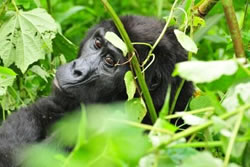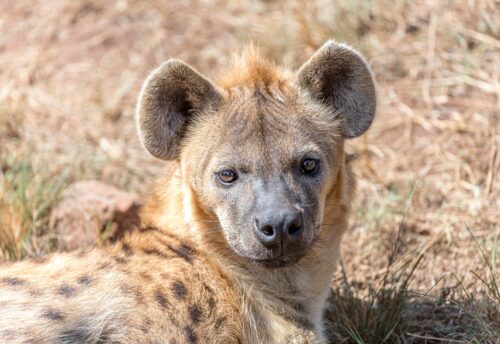Why Gorillas are Defined as a Unique Feature to Visit?
 Gorillas are ground dwelling tailless apes which nearly are characterized with behaviors similar to those of Human beings. The largest living primates’ “Gorillas” are widespread residents of the equatorial African rain forest with a global population of perhaps 100,000 concentrated mainly in the Congo basin.
Gorillas are ground dwelling tailless apes which nearly are characterized with behaviors similar to those of Human beings. The largest living primates’ “Gorillas” are widespread residents of the equatorial African rain forest with a global population of perhaps 100,000 concentrated mainly in the Congo basin.
In 2001 gorillas were assigned to the species, split into three races named the western lowland gorilla, Eastern lowland gorilla and mountain gorilla. The Western race was formally described in 1847 but the eastern races were only described in the early 20th century, the mountain gorilla in 1903 a year after two individuals were shot on Mount Sabyinyo by Oscar van Beringe and the eastern lowland gorilla in 1914.
The conventional taxonomic classification of gorillas has been challenged by recent advances in DNA testing and fresh morphological studies suggesting that the western and eastern gorilla population, whose ranges lie more than 1000km a part, diverged some two million years ago.
For this reason, they are now treated as discrete species. In 2000 the cross-River gorilla and Mountain Gorilla shared the dubious distinction of being placed on a short list of the World’s 25 most endangered primate.
The status of Western gorilla is relatively secure, since it is far more numerous in the wild than its eastern counterpart and has a more extensive range spanning half a dozen countries.
Recent estimates place the total population of western Gorillas at around 8000 but numbers are in rapid decline largely due to hunting for bush meat and the lethal Ebola virus.
The fate of the Eastern gorilla still split into a lowland and mountain race is far less certain. In the mid-1990s an estimated 17000 eastern lowland gorillas remained in the wild, but it is widely thought that the population has halved or worse since the outbreak of the civil war.
Rarer still but more stable is the mountain Gorilla with just 700 individuals confined to two ranges, the border straddling Virunga Volcanoes and Bwindi Impenetrable National Park in Uganda. The mountain gorilla is distinguished from its lowland counterparts by several adaptations to its high-altitude home most visibly a longer and more luxuriant coat.
Africa as a continent is popularly known for the shy endangered Mountain and Lowland gorillas which are found in three countries named Uganda, Rwanda and Democratic Republic of Congo which are located in the Eastern and central part of the African Continent.
Mountain gorillas are found in Uganda, Rwanda and Democratic Republic of Congo with Uganda hosting the most part of the World’s Gorilla population but Eastern lowland gorillas are only found in Democratic Republic of Congo.
For the case of Uganda these apes are found in the great Bwindi Impenetrable Forest National Park and Mgahinga Gorilla National Park with Bwindi hosting the most part of Uganda’s gorilla population with over thirteen habituated gorilla families, Mgahinga has only one habituation gorilla family for trekking. The price for the gorilla trekking safari permit in Uganda costs $700 USD per person.
For Rwanda mountain gorillas are only found in Volcanoes National Park located in Ruhengeri Province with over twelve habituated gorilla families for trekking and research. Some of the families in Volcanoes we have the Kwitonda, Susa, Amahoro, Umubano, Sabyinyo gorilla family and more. The price for gorilla trekking safari permit in Rwanda costs $1500 USD per person.
For Democratic Republic of Congo, Mountain gorillas are found in Virunga National Park formerly called the Albertine National Park and is rated to be the oldest national park in Africa. Eastern lowland gorillas in Democratic Republic of Congo are found in Kahuzi Biega National Park which is located in the Eastern part of Democratic Republic of Congo.
The gorilla trekking permit in Democratic Republic of Congo costs $400 USD per person and this money is paid in advance to book for your permit, mostly once this money is paid it’s not refundable unless a clear reason is presented to the responsible Virunga or Kahuzi Biega authorities.


